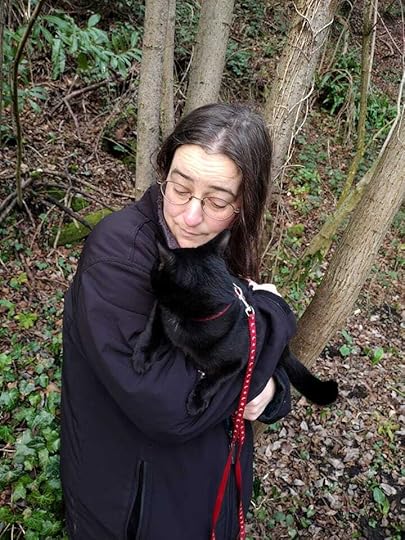This is not invisible illness

There are more ‘invisible’ illnesses out there than visible ones. Granted, there are a few that will announce themselves on your skin. There are quite a few illnesses that are obvious because they impact on your movement and speech – and I’ve heard far too many stories about those being assumed to be the result of substance abuse.
Depression and anxiety are not invisible illnesses. Not if you care to look closely. The picture in this blog was taken during a very bad week, where the panic had compromised my ability to sleep amongst other things. I was exhausted, and I looked it. My skin tone, my posture, the shadows around my eyes, the look on my face…
It’s tempting on social media to present the best version of your face to the world. It’s tempting to want to be seen as your best self – and in some ways that’s a stronger pitch for an author. Some people will judge you for being fragile, ill, in trouble and some people will see that as a sign of weakness or failure. That’s part of why I’m sharing this photo.
I panic when I can’t work out what to do, or when everything I do seems to be wrong. There’s a very particular kind of panic that goes with feeling that I have nothing to offer, and that my very existence may be harmful to others. The kind of anxiety I get on normal days is mild and bearable, but the kind of panic that leaves me feeling like a failure as a human being… that one is really dangerous.
It doesn’t look like a broken arm or like blood gushing from my body, but it’s not that hard to spot. Most people’s ‘invisible’ illnesses aren’t that hard to notice if you listen to what people tell you and pay some attention to what’s going on. Failure to recognise this stuff should not be an excuse for ignoring it, denying people help or acting without compassion.



